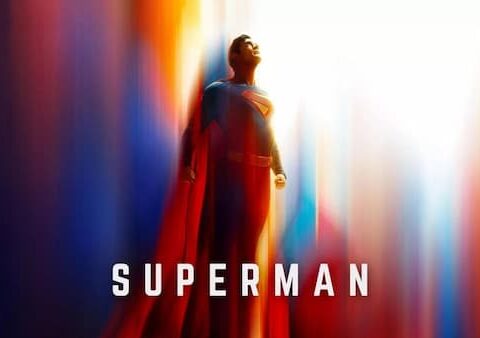The Age of X-Man event, which dominated the X-books in the first half of 2019, was an ambitious, imaginative and large-scaled occurrence: with five different titles carrying the story for five months, while the Age of X-Man: Alpha and Omega books served as beginning and end.
With the entire make-up of the event clearly modelled on the classic Age of Apocalypse event from 1995, Age of X-Man could’ve been accused of being merely either a rehash or a tribute act. In the end, it doesn’t necessarily feel like either; but manages to craft out its own style and substance.
It isn’t all great. But, the way this event is structured, you tend not to remember or focus on specific chapters, titles or moments, but instead on the broader, overall ‘event’ and the broader, overall vibe, taste and aftertaste.Being short on time recently, I decided not to try to review all of the specific Age of X-Man titles individually: and to instead just give a broad review of all the books together, while reviewing Age of X-Man: Omega separately (as I did here for Age of X-Man: Alpha).
The various Age of X-Man titles and their five-issue runs have been a mixed bag, with some titles more interesting than others – and of course some installments better than others too.
One would expect Marvelous X-Men to be the best of the books; but it probably isn’t. Which is not to say it isn’t worth the reading time, because it’s probably the book that best lays out the reality of this unreality and kind of acts as a foundation stone for the other titles.
It does have the most essential grouping of characters of all the books, with Magneto, Jean, Ororo and co only to be found in these pages, along with X-Man himself. There’s also a poetic flourish to the Marvelous X-Men books that makes it feel different to the other titles: but it’s not as much fun as The Amazing Nightcrawler and not as endearing as Next Gen.
What we effectively see, however, across several installments is the extent to which X-Man is keeping everyone’s minds in exactly the state he wants them: including the minds of the X-Men themselves.
The Amazing Nightcrawler gives us the novelty value of this reality’s Kurt Wagner being a big-time movie star – which is actually rather fun, even if silly. The Nightcrawler title is probably the most charming of the bunch: and seeing Kurt and Meggan in a ‘forbidden love’ situation is actually a drama that really held my attention across multiple installments.

It’s also a really good mix of characters in this particular title: not just Kurt and Meggan, but Amara, the Cuckoos, etc. It’s always interesting; always tonally and visually engaging, even if the themes start to wear thin after a few installments.
The Amazing Nightcrawler has some of the best character work. In particular, the whole story with Kurt’s child (with Meggan); and the Cuckoos manipulating Kurt’s and Meggan’s minds and reality repeatedly in order to cover up their illegal relationship. This was all really interesting and often endearing material.
Apocalypse and the X-Tracts shows us En Sabah Nur as a revolutionary and a dissident – a socio-political activist. Which, again, is weird, but interesting.
All the books also tie into each other in a well-planned way that is very effective: these aren’t random, isolated books just trying to milk the Age of X-Man hype – they each provide a key aspect of the overall situation.
Each book explores a different facet of this dystopian/Orwellian construct: for example, Prisoner X is set in a prison (where people are pretty much being held for being social pariahs or non-conformists rather than actual criminals), Next Gen deals with the indoctrination and forced conformity regarding teenagers in the school system, X-Tremists follows the activities of the enforcement agency (essentially the Thought Police), etc.
Essentially, you need each series to fill in key parts of the overall picture – none of it is just perfunctory.
The series I probably got the most out of was the Next Gen title: it seemed to have the best storytelling, the best dilemmas and struggles. Seeing this world and its problems through the lives of the kids – Glob, Pixie, Armor, etc – proves to be more engaging than seeing the affairs of the older characters elsewhere, possibly because, as teenagers, they’re more sympathetic.
Across the Next Gen series, we see this close-knit group of young characters struggling to reconcile their doubts about this reality with their mental conditioning, leading to lots of fallings-out and inner turmoil. It’s really nice that Glob is so important to this story: he is literally the one who can see the false nature of reality.
Prisoner X, centering on Bishop’s incarceration, is a good, intriguing book too, affording some well-placed parts in the drama for the likes of Honey Badger, Polaris, Hank McCoy and some others. But it offers nothing particularly memorable in the end.
X-Tremists is probably the book I’ve found the least engaging. While it’s a necessary book, providing a necessary element of the narrative (the day-to-day activities of Department X and their policing of the population), it just failed to engage me much (even though it has Psylocke as the main character).
In a more general, overall sense, there were one or two themes or ideas that I didn’t really get much out of: or that seemed to fall flat for me.
For example, I don’t entirely get why there’s this big theme of love, inter-personal relationships and connections, etc, being forbidden. It’s a bit of a weird rule in this society, it’s purpose feeling unclear: in storytelling terms, it’s also a little cheesy at times.
This element was reminding me a lot of George Lucas’s THX 1138 film, but minus the genuinely bleak, dystopian vibe. For such a questionable trope in this storyline, it’s odd that the ‘forbidden love’ rule seems to be the central driving element in the early installments of each book: it’s what lands Bishop in prison (in the Prisoner X book), it’s what becomes Kurt’s chief dilemma in The Amazing Nightcrawler series, and it’s the central principle of En Sabah Nur’s resistance campaign.

En Sabah Nur is literally a Social Justice Warrior for LOVE – which is pretty f*****g weird shit.
On a better (and more dramatically engaging) note, we also have the familiar trope of various characters slowly, reluctantly beginning to sense something is not right with this reality: slowly waking up or having moments of doubt or revelation. This accelerates rapidly in the final chapters of each title.
But it happens to various characters over the course of the books: it’s nothing fresh or all that engaging at this point, as we’ve done stories like this before. To name just a couple of examples among many, I’ve just been re-reading the Pleasant Hill books, but it’s also very reminiscent of the Agents of S.H.I.E.L.D TV show’s fourth season where the characters were trapped in a simulated reality created by an AI.
Another key story element that appears in all the books is a drug called ‘Unveil’ – which can open people’s eyes and make them see and understand that their reality is a falsehood. Again, this particular plot device fell a little flat for me.
Naturally, there are a lot of deliberate call-backs to the Age of Apocalypse: En Sabah Nur being a key player (albeit in reverse), Bishop being a central character, Legion and X-Man both having key roles in the underlying reality, even Lorna/Polaris being a prisoner (just like in the Factor-X books back in the 1995 AoA) and an important wild-card.
The revelation, in Apocalypse & the X-Tracts #4, that En Sabah Nur is in fact simply a scripted villain/actor working for Nate/X-Man is actually one of the best twists in the entire run of books. It definitely caught me by surprise, having up til this point been quite convinced by the whole Apocalypse as bizarre SJW thing.
In the final books of each series, things come to a head, leading us into Age of X-Man Omega – essentially, in each book, the characters realise they’re living in an illusion and are under control. All these final chapters pretty much mirror each other.
Marvellous X-Men #5 is probably the best of these, as Nate’s core team of X-Men come to the realisation at last that they’ve been living in a false reality under Nate’s control (by the way, the opening sequence in Marvelous X-Men #5 is genius: giving us a few panels of old-style 60s X-Men with Professor X and the original team, albeit with Nate/X-Man retroactively inserted in to that past – it’s a perfect illustration of this rewritten reality).
The Prisoner X finale, meanwhile, has Bishop and co locating and confronting Legion – who has also been imprisoned here in Nate-land.
All roads now lead to Age of X-Man Omega.
The truth is I probably haven’t enjoyed the Age of X-Man books as much as I hoping to (or as I once did the Age of Apocalypse books). In part, this might be because I’m so much older now: or because comic book ‘events’ and alternate realities/timelines are such a well-travelled trope by now.
I also think the long run of Uncanny X-Men issues that have been going on alongside these Age of X-Man books have probably been more compulsive reading (and, oddly, felt more like Age of Apocalypse than Age of X-Man has): being darker and perhaps more dramatic from chapter to chapter – as contrasted to the slow-burn and more surrealist nature of the Age of X-Man books.
That being said, the Age of X-Man books generally make for interesting, colourful, and often compelling, reading. This has by no means been a bad or empty event: but has provided frequent poetry and substance.
What has been sustained throughout all the books, however, is the same surreal, off-beat atmosphere and undercurrent that Age of X-Man: Alpha so effectively established. Whichever book you read, the interconnectedness and shared reality is palpable and very well maintained. And it is tone, theme and atmosphere that is really what keeps these books feeling engaging and even addictive.
While much in the final reckoning depends heavily on how much you enjoy or don’t enjoy Age of X-Man Omega, this Age of X-Man event has been an entirely worthy journey to undertake – literally opening up a whole new world and allowing us to exist in it for a time.
It’s also worth saying that, compared to the other big Marvel ‘events’ of the year – War of the Realms or the recent Infinity Wars, for example – what the X-Men books have been doing here (both in Age of X-Man and the pages of Uncanny X-Men) has been far more sophisticated, far more interesting and far more worthy.




